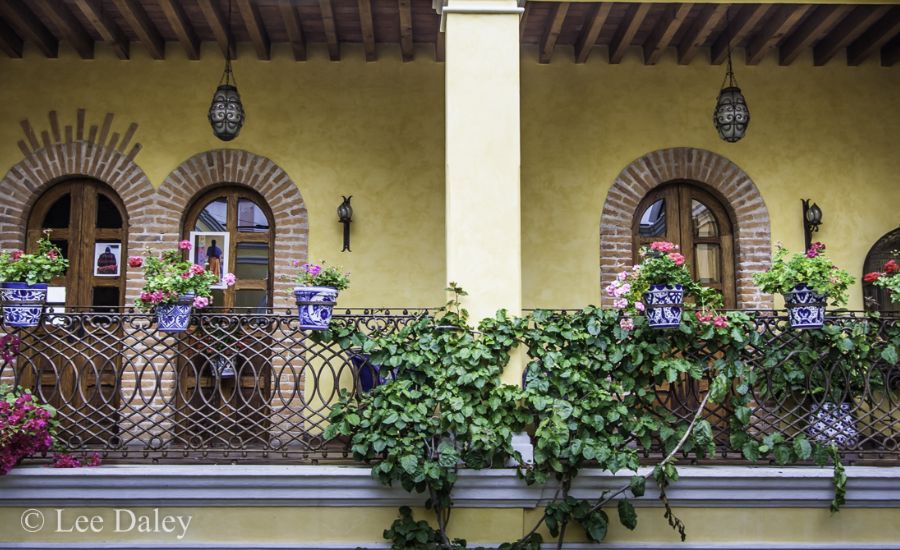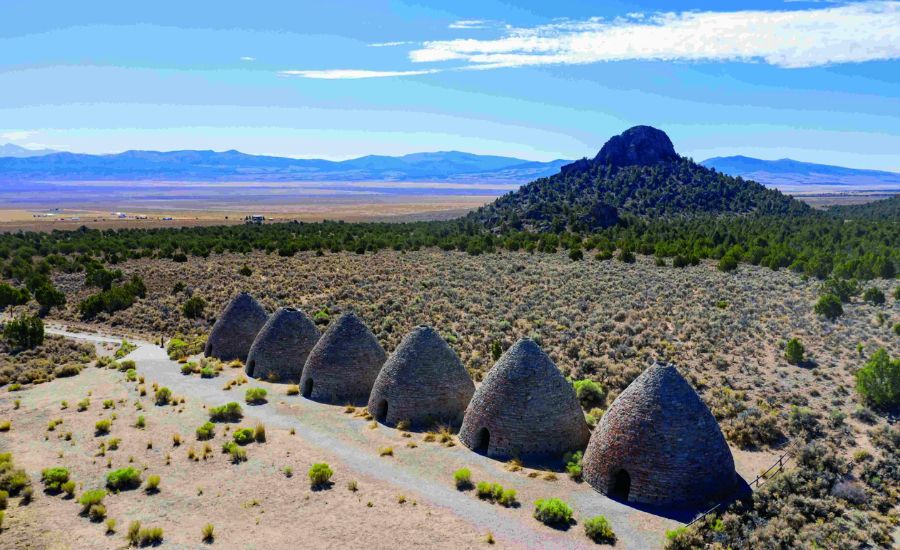Old Mexican Mining Ovens Regions, Labor, Tourism & More
Introduction

Mexico’s fluctuated scenes are famous for their regular quality as well as for their rich verifiable woven artwork. Among the less popular yet vital components of this set of experiences are the old Mexican mining broilers, or “hornos de cal.” These customary designs assumed a critical part in Mexico’s mining industry, especially from the pioneer time frame through the early post-provincial period. This article investigates the set of experiences, design, and social meaning of these mining stoves, featuring their effect on Mexico’s monetary and social turn of events.
Historical Background
The Rise of Mexican Mining
Mining has for quite some time been basic to Mexico’s set of experiences, following back to the old civilizations of the Aztecs and Maya, who were gifted in separating and using different minerals. Nonetheless, it was during the Spanish frontier time that Mexican mining genuinely extended. Following the Spanish success in the mid sixteenth hundred years, new mining strategies and an extraordinary quest for valuable metals changed Mexico into a significant worldwide player in silver creation. Areas like Zacatecas and Guanajuato became inseparable from immense silver stores, further filling the nation’s mining blast.
The Advent of Mexican Mining Ovens
As mining tasks extended, so did the requirement for proficient handling techniques. This prompted the improvement of the “hornos de cal,” or lime ovens, which were fundamental for changing crude mineral into usable materials. These stoves were essentially used to create quicklime (calcium oxide) by warming limestone to high temperatures.

This cycle made lime as well as produced carbon dioxide, a significant side-effect in the purifying system used to remove important metals.Working mining broilers was work serious, requiring talented specialists who figured out the intricacies of lime creation. Numerous laborers were neighborhood native individuals who frequently confronted unforgiving circumstances.
The presence of these broilers additionally prodded the development of mining networks, with settlements conforming to significant mining destinations and adding to the advancement of framework and neighborhood economies.Concentrating on old Mexican digging stoves holds pertinence for current enterprises and authentic exploration. The strategies utilized in these broilers offer significant examples in conventional lime creation techniques, which can illuminate contemporary practices and improve how we might interpret verifiable mining advancements.
Architectural Features
Construction and Design
Old Mexican digging stoves are surprising for their particular engineering. Built from neighborhood materials, for example, stone or adobe, these broilers were intended to get through the extreme intensity expected for lime creation. Their plan was affected by neighborhood geographical circumstances and the materials within reach.

- A run of the mill mining broiler structure incorporates a few key parts:
- Stack: A tall, restricted chimney stack empowered the proficient removal of gases and smoke created during the lime-consuming interaction.
- Furnace Chamber: The fundamental chamber where limestone was warmed. This chamber was frequently round and hollow or arch formed to guarantee even intensity circulation.
- Firebox: Situated at the base, the firebox was where fuel — normally wood or charcoal — was scorched to produce the vital intensity.
- Drafts and Vents: These elements took into consideration air dissemination and temperature control inside the broiler.
Variations Across Regions
The plan of mining stoves fluctuated across various districts of Mexico, reflecting neighborhood assets and mining rehearses. In certain areas, stoves were incorporated into slopes or normal stone developments to improve their protection and intensity maintenance. In others, more intricate designs were developed to take care of the requirements of bigger mining tasks.
The Role of Mining Ovens in the Mining Industry
Lime Production
The essential job of these broilers was to create quicklime, which was fundamental in the refining system for extricating silver and different metals from mineral. Quicklime went about as a transition, assisting with isolating pollutants from the metal and working on the productivity of purifying.

Economic Impact
The development of quicklime fundamentally affected Mexico’s economy during the pioneer time frame. The popularity for lime — utilized in mining as well as in development and farming — added to Mexico’s financial development. The outcome of the mining business was intently attached to the productive activity of these stoves, which assumed a focal part in the nation’s flourishing.
Labor and Community
Working mining broilers was work serious, requiring talented specialists who figured out the intricacies of lime creation. Numerous laborers were neighborhood native individuals who frequently confronted unforgiving circumstances. The presence of these broilers additionally prodded the development of mining networks, with settlements conforming to significant mining destinations and adding to the advancement of framework and neighborhood economies.Concentrating on old Mexican digging stoves holds pertinence for current enterprises and authentic exploration. The strategies utilized in these broilers offer significant examples in conventional lime creation techniques, which can illuminate contemporary practices and improve how we might interpret verifiable mining advancements.
Cultural and Historical Significance

Legacy of Mining Ovens
Old Mexican mining broilers are something beyond relics of the past; they are images of Mexico’s rich mining legacy. A significant number of these broilers have been safeguarded as social and verifiable tourist spots, giving bits of knowledge into the innovative progressions and monetary acts of their time.
Preservation and Tourism
As of late, endeavors to save these memorable designs have picked up speed. Many mining stoves are presently highlighted in legacy locales and exhibition halls, offering guests a brief look into Mexico’s mining history. These destinations assume a pivotal part in teaching general society about the verifiable meaning of mining and the commitments of the labor force.
Modern Relevance

Concentrating on old Mexican digging stoves holds pertinence for current enterprises and authentic exploration. The strategies utilized in these broilers offer significant examples in conventional lime creation techniques, which can illuminate contemporary practices and improve how we might interpret verifiable mining advancements.
Challenges and Future Directions
Conservation Efforts
Notwithstanding their authentic significance, numerous old mining broilers face difficulties connected with protection and conservation. Regular disintegration, defacing, and deficient subsidizing compromise the trustworthiness of these designs. Resolving these issues requires a cooperative exertion from neighborhood networks, students of history, and moderates.
Promoting Awareness
Bringing issues to light about the meaning of these authentic locales is significant for their conservation. Instructive projects, local area contribution, and the travel industry drives can assist with featuring the significance of safeguarding old Mexican mining stoves and guarantee that their authentic and social worth is perceived by people in the future.
Research and Documentation

Continuous exploration and documentation are imperative for grasping the authentic setting and innovative parts of mining broilers. Archeological examinations, verifiable records, and oral narratives give significant experiences into the job these stoves played in Mexico’s mining industry.
Facts:
- Historical Importance: Old Mexican mining ovens, or “hornos de cal,” played a crucial role in the mining industry during the colonial and early post-colonial periods by producing quicklime for ore processing.
- Construction: These ovens were typically built from local materials such as stone or adobe. They featured a tall chimney for smoke expulsion, a cylindrical or dome-shaped kiln chamber for heating limestone, and a firebox at the base where fuel was burned.
- Lime Production: The primary function of these ovens was to produce quicklime (calcium oxide) by heating limestone. Quicklime was essential in the smelting process to extract metals like silver from ore.
- Economic Impact: The production of quicklime significantly impacted Mexico’s economy, contributing to the prosperity of the colonial mining industry and supporting various sectors such as construction and agriculture.
- Labor and Communities: The operation of these ovens was labor-intensive and often involved local indigenous people. The growth of mining communities around these ovens contributed to infrastructure development and local economies.
- Regional Variations: Mining oven designs varied across Mexico, reflecting local materials and mining practices. Some ovens were built into hillsides for better heat retention, while others were more elaborate.
- Preservation: Many old Mexican mining ovens are now preserved as cultural and historical landmarks. They are featured in heritage sites and museums, offering insights into Mexico’s mining history.
- Modern Relevance: Studying these ovens provides valuable lessons on traditional lime production methods, which can inform contemporary practices and enhance understanding of historical mining technologies.
Summary:
Old Mexican mining ovens, known as “hornos de cal,” were essential structures in Mexico’s mining industry during the colonial and early post-colonial periods. They were used to produce quicklime from limestone, a crucial component in the smelting process for extracting metals like silver. Constructed from local materials such as stone and adobe, these ovens featured distinctive architectural elements like tall chimneys and cylindrical kiln chambers. The production of quicklime had a significant economic impact, supporting Mexico’s mining industry and various other sectors. The labor-intensive operation of these ovens often involved indigenous workers and led to the development of mining communities. Today, many of these historical ovens are preserved as cultural landmarks and offer valuable insights into Mexico’s mining heritage. Their study remains relevant for understanding traditional lime production methods and historical mining technologies.
FAQs:
- What were old Mexican mining ovens used for?
- Old Mexican mining ovens, or “hornos de cal,” were used to produce quicklime by heating limestone. Quicklime was essential in the smelting process to extract metals such as silver from ore.
- How were these ovens constructed?
- These ovens were typically built from local materials like stone or adobe. They featured a chimney for smoke expulsion, a kiln chamber for heating limestone, a firebox for burning fuel, and drafts or vents for air circulation.
- What impact did these ovens have on Mexico’s economy?
- The production of quicklime had a significant economic impact, supporting the prosperity of Mexico’s mining industry and contributing to sectors such as construction and agriculture.
- How did the design of mining ovens vary across Mexico?
- The design of mining ovens varied depending on local resources and mining practices. Some were built into hillsides for better insulation, while others were more elaborate to accommodate larger operations.
- Are old Mexican mining ovens preserved today?
- Yes, many old Mexican mining ovens are preserved as cultural and historical landmarks. They are featured in heritage sites and museums, offering insights into Mexico’s mining history.
- Why is studying old Mexican mining ovens important?
- Studying these ovens provides valuable lessons in traditional lime production methods, informs contemporary practices, and enhances understanding of historical mining technologies.
- Read more information about Travel at trendaddictor


